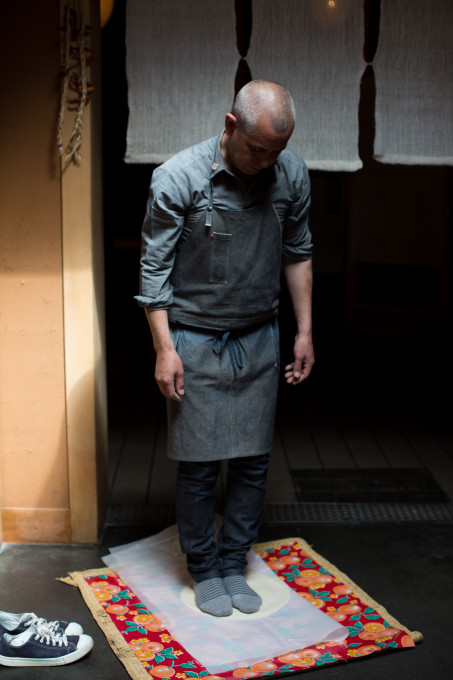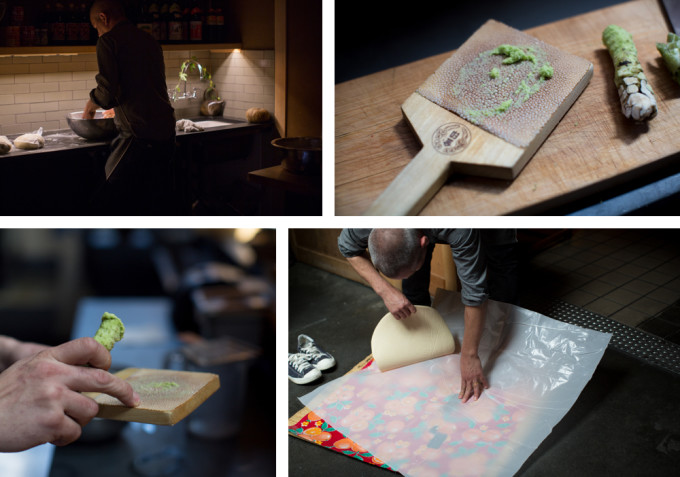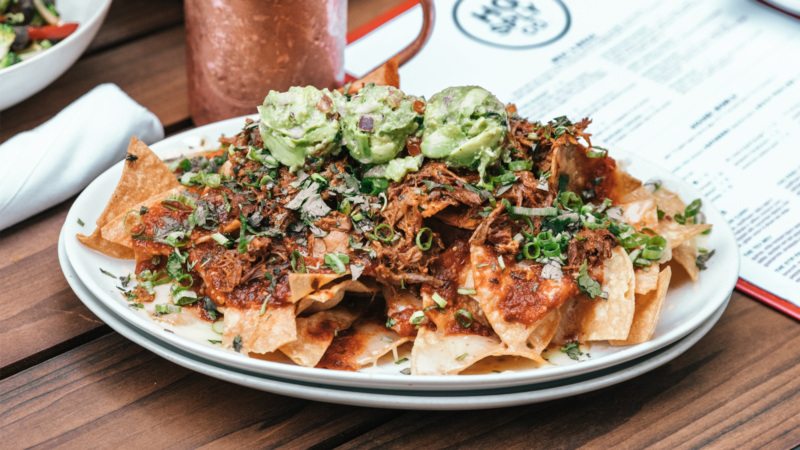

Behind the Line: The Secret of Izakaya Rintaro’s Udon
Welcome to Behind the Line, your all access pass to the top kitchens in the game. So step into the temple of Rintaro and visit the shrine of udon.

Chef Sylvan Brackett kneading the udon dough in a traditional technique found in the area of Japan where udon was first made.
The pilgrimage of Izakaya Rintaro chef and owner Sylvan Brackett has taken him from Chez Panisse to Peko Peko, a pop-up, and, now to a full-fledged restaurant in the thick of the Mission. Over the years he’s honed his skills in Japanese kitchens, too, traveling to taste the best and learn from the masters. Here’s something you know: authenticity plays. From the handmade mochi to the sharkskin grated fresh wasabi, Brackett’s game is on lockdown. But his greatest achievement might be Rintaro’s udon.

1. Chef combines the water and the flour in the most meticulous of manners, with the goal of creating that ideal chew. 2. & 3. Fresh grated wasabi. 4. Chef pulling the udon dough off the sheet before rolling it on the counter.
At the pinnacle of Rintaro’s menu is udon. What separates his noodles apart from the rest? Well first off, they’re made fresh every day. But here’s the full breakdown.
According to Brackett, “the ideal texture is soft and silky on the outside and a little bit chewy on the inside.” The first task for Brackett was to hunt down the right flour, “I went to a Japanese company that’s making udon flour in Montana,” for a finely milled flour and uniform noodle. After the dough is formed, the silkiness and gluten are developed by kneading it, but not with his hands. To knead the dough with your feet is a traditional technique found in the area where udon was first made.
“I was just in Takamatsu which is the center of udon in Japan on Shikoku Island,” he explains as he moves in a circle on top of the round of dough, “It’s weirdly exhausting, very pilates-esque. I’m trying to build the gluten, usually we stack three on top of each other.” Post-workout the dough is rolled out and cut by hand with an udon kiri, a special knife.

1. Chef using a traditional Japanese rolling pin to flatten the dough. 2. Chef cutting the udon by hand with an udon kiri knife.
And, what of the stock? “The broth has got to be very rich, it’s both rich tasting but light almost so there is no fat in it. We use filtered water for this and for all of the dashi.” Then, “we cook the noodles separately, then you rinse them to wash the starch off and then you shock them in ice water to make them chewy again and then ladle the broth over.” A multi-layered process at the opposite end of the culinary spectrum to European cuisine, “Italian and French is about building flavors on top of each other, Japanese is about taking stuff out.” The udon is recommended with a hot spring egg, a nourishing addition to an already dynamite udon.

The finished product, udon in a rich broth.
Taste it for yourself. Grab a seat.
Discover More















